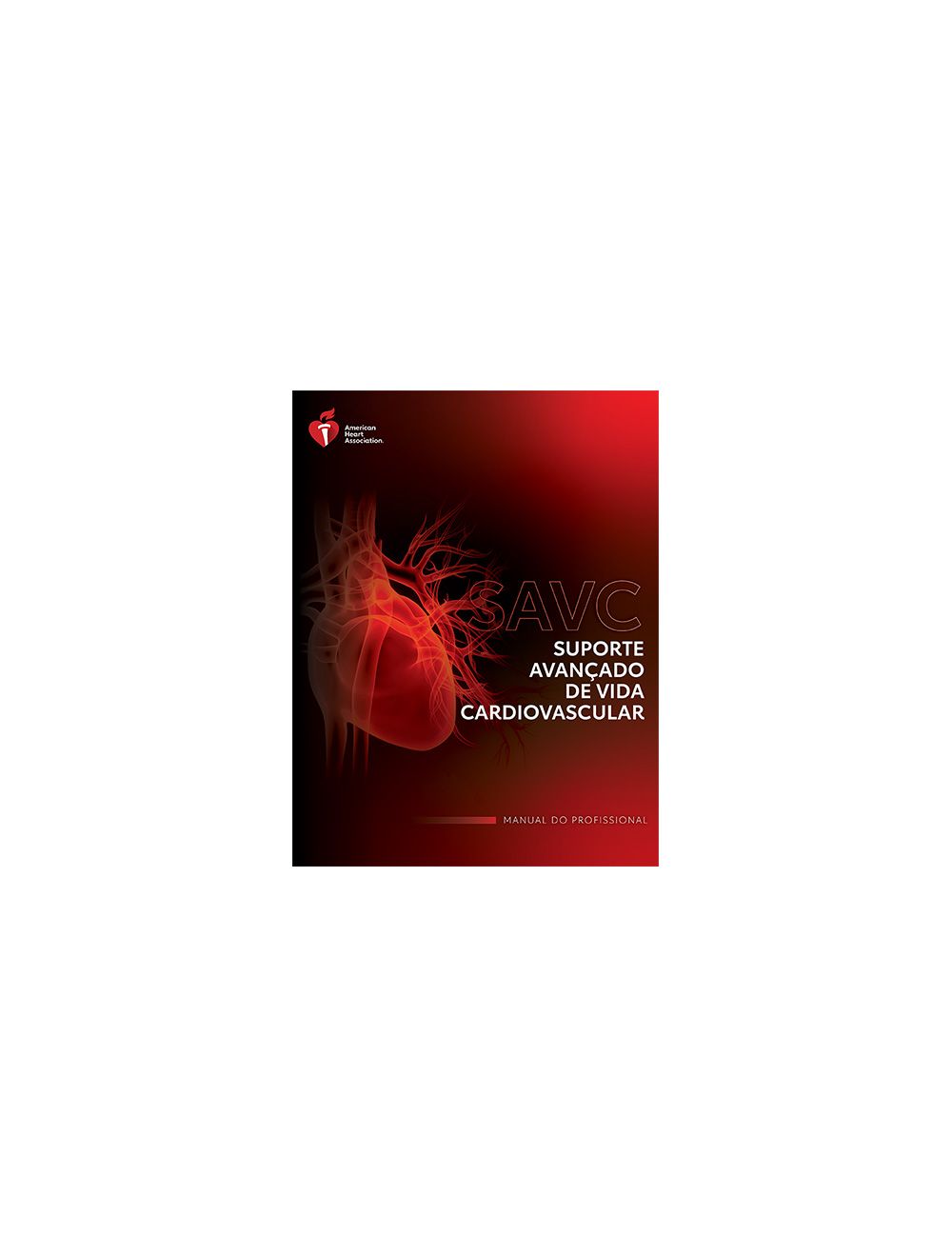
2020 AHA ACLS Provider Manual - Portuguese
Manual do Profissional de Suporte Avançado de Vida Cardiovascula
Course teaching the importance of preventing cardiac arrest, high-performance teams, continuous high-quality CPR, systems of care, recognition and intervention of cardiopulmonary arrest, post-cardiac arrest care, acute dysrhythmias, stroke, and acute coronary syndromes (ACS)
The ACLS Provider Manual contains all of the information students need to know to successfully complete the ACLS Course. The ACLS Provider Manual is designed for use by a single user and as a student reference tool pre- and post-course. It is also used as a clinical reference. This manual includes the systematic approach to a cardiopulmonary emergency, effective team communication, and the ACLS cases and algorithms.
Included with the ACLS Provider Manual is the AHA’s ACLS Reference Cards. These are convenient, quick reference tools that healthcare professionals can access during the ACLS Course and in a variety of healthcare settings. This set of paneled Reference Cards includes:
- ACLS Cardiac Arrest Arrhythmias, and Their Treatment
- ACLS Acute Coronary Syndromes and Stroke
- ACLS Cardiac Arrest in Special Situations and Neuroprognastication.
The AHA’s ACLS Course has been updated to reflect new science in the 2020 AHA Guidelines for CPR and ECC, as well as the 2019 Update to the 2018 ASA Ischemic Stroke Guidelines. The ACLS Course teaches the importance of preventing cardiac arrest, high-performance teams, continuous high-quality CPR, systems of care, recognition and intervention of cardiopulmonary arrest, post-cardiac arrest care, acute dysrhythmias, stroke, and acute coronary syndromes (ACS).
Course Learning Objectives:
After successfully completing the ACLS Course, students should be able to:
- Define systems of care
- Apply the BLS, Primary, and Secondary Assessments sequence for a systematic evaluation of adult patients
- Discuss how the use of a rapid response team (RRT) or medical emergency team (MET) may improve patient outcomes
- Discuss early recognition and management of ACS, including appropriate disposition
- Discuss early recognition and management of stroke, including appropriate disposition
- Recognize bradycardias and tachycardias that may result in cardiac arrest or complicate resuscitation outcome
- Perform early management of bradycardias and tachycardias that may result in cardiac arrest or complicate resuscitation outcome
- Model effective communication as a member or leader of a high-performance team
- Recognize the impact of team dynamics on overall team performance
- Recognize respiratory arrest
- Perform early management of respiratory arrest
- Recognize cardiac arrest
- Perform prompt, high-quality BLS including prioritizing early chest compressions and integrating early automated external defibrillator (AED) use
- Perform early management of cardiac arrest until termination of resuscitation or transfer of care, including immediate post–cardiac arrest care
- Evaluate resuscitative efforts during a cardiac arrest through continuous assessment of CPR quality, monitoring the patient’s physiologic response, and delivering real-time feedback to the team
Replaces #15-2212
ISBN: 978-1-61669-919-2



